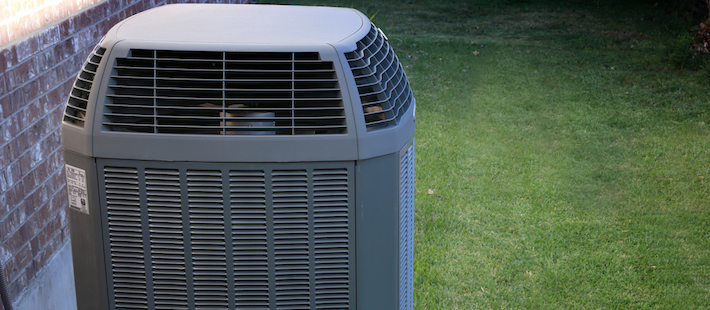
Do the Indoor and Outdoor AC Units Need to Be Replaced At the Same Time?
How much do you enjoy living in Florida? In the grand scheme of things, we are so lucky: While we do get the occasional cold fronts around winter, they are generally gone within a couple of weeks. We have beautiful white sand beaches. We have palm trees, Disney World, and the kind of views that tend to go hand-in-hand with the hashtag #ILiveWhereYouvacation.
That said, we also have to deal with blazing hot summers and an oppressive humidity that would piss off even those with the cheeriest of dispositions. So it’s easy to panic if our AC starts to have issues.
What happens when only one part of your system stops working? Do you just replace the condenser unit and keep the inside one until it croaks? Do you have to splurge and replace both units?
Lucky for you, we have answers.
Replacing Outdoor AC Unit
The outdoor portion of your AC is called the condenser unit. If it stops working, check to see if it’s still under warranty. Most air conditioner warranties have a lifespan of about 5 to 10 years, so even if your AC is a couple of years old, you may still be in luck.
If it is, get it replaced at no cost to you and toast the victory with your friends and family.
If it turns out that you’re out of luck on that front, you’ll have to buy a new condenser unit and brace yourself to get a new inside unit as well. There are several reasons why doing so would be in your best interest:
1. Lower cost in the long run. While it’s more expensive to have to replace both items at the same time, you have to look at the big picture: If the condenser failed past the expiration date of the warranty, the clock is already ticking for the same thing to happen to the inside unit. Buying them separately will cost you more than buying them together.
If you can’t afford to get them both replaced at the same time, make sure to make adjustments for when you do have to replace the inside unit.
2. Energy efficiency. More modern AC units are designed to improve energy efficiency. Newer models are friendlier on the environment and on your pocket.
3. Refrigerant requirements have changed. Air conditioners work by absorbing the warm air and moisture from your home. Refrigerant turns it into cold air, which is what comes out of your vents.
The same way more modern AC units are more energy efficient, newer refrigerants are more environmentally friendly. And this is not some hippy dippy stuff. Considering that there is such a thing as refrigerant poisoning, it’s a good thing that there are environmental regulations that require better formulas.
This brings us to the last point on this list:
4. Compatibility. Outside and inside units are specifically designed to work together. Having incompatible parts will likely result in higher electricity bills. It may also result in an AC system that doesn’t cool as well as it should. And it’s not just about refrigerant requirements. You want to make sure they have the same rating systems and air filter requirements.
You could always have a technician inspect your units to give you an assessment of how long the part that’s still working will last. Or you could prevent issues before they arise by having regular maintenance check-ups on your entire system.
Contact A+ Air Conditioning in Gainesville for an AC Replacement
Whether your home or business is having air conditioning issues, we are here to help. And because we know that AC is a necessity in Florida, we offer 24/7 emergency service.
Contact us and let us get your air conditioner running perfectly. Your family and customers will love you for it.


